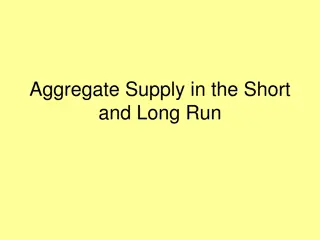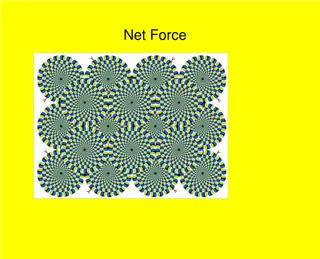Understanding the Market Force of Supply
The market force of supply is determined by sellers' willingness and ability to sell goods at varying prices. The law of supply states that as the price of a good rises, the quantity supplied also increases. Supply schedules, curves, and shifters play vital roles in illustrating this economic concept.
Download Presentation

Please find below an Image/Link to download the presentation.
The content on the website is provided AS IS for your information and personal use only. It may not be sold, licensed, or shared on other websites without obtaining consent from the author. Download presentation by click this link. If you encounter any issues during the download, it is possible that the publisher has removed the file from their server.
E N D
Presentation Transcript
Supply The quantity supplied of any good is the amount that sellers are willing and able to sell. Law of supply: the claim that the quantity supplied of a good rises when the price of the good rises, other things equal 2
The Supply Schedule Price of lattes $0.00 1.00 2.00 3.00 4.00 5.00 6.00 Quantity of lattes supplied 0 3 6 9 12 15 18 Supply schedule: A table that shows the relationship between the price of a good and the quantity supplied. Example: Starbucks supply of lattes. Notice that Starbucks supply schedule obeys the Law of Supply. 3
Starbucks Supply Schedule & Curve Price of lattes $0.00 1.00 2.00 3.00 4.00 5.00 6.00 Quantity of lattes supplied 0 3 6 9 12 15 18 P $6.00 $5.00 $4.00 $3.00 $2.00 $1.00 $0.00 Q 0 5 10 15 4
Market Supply versus Individual Supply The quantity supplied in the market is the sum of the quantities supplied by all sellers at each price. Suppose Starbucks and Jitters are the only two sellers in this market. (Qs = quantity supplied) Price Starbucks Jitters Market Qs $0.00 1.00 0 .... = 0 3 2 = 2.00 .... 4 = 10 3.00 .... 6 = 15 4.00 12 .... = 20 5.00 .... 10 = 25 6.00 18 12 = 5
The Market Supply Curve QS P (Market) 0 5 10 15 20 25 30 P $0.00 1.00 2.00 3.00 4.00 5.00 6.00 $6.00 $5.00 $4.00 $3.00 $2.00 $1.00 Q $0.00 0 5 10 15 20 25 30 35 6
Supply Curve Shifters The supply curve shows how price affects quantity supplied, other things being equal. These other things are non-price determinants of supply. Changes in them shift the Scurve 7
Supply Curve Shifters: Input Prices Examples of input prices: wages, prices of raw materials. A fall in input prices makes production more profitable at each output price, so firms supply a larger quantity at each price, and the S curve shifts to the right. 8
Supply Curve Shifters: Input Prices Suppose the price of milk falls. At each price, the quantity of Lattes supplied will increase (by 5 in this example). P $6.00 $5.00 $4.00 $3.00 $2.00 $1.00 Q $0.00 0 5 10 15 20 25 30 35 9
Supply Curve Shifters: Technology Technology determines how much inputs are required to produce a unit of output. A cost-saving technological improvement has the same effect as a fall in input prices, shifts S curve to the right. 10
Supply Curve Shifters: # of Sellers An increase in the number of sellers increases the quantity supplied at each price, shifts S curve to the right. 11
Supply Curve Shifters: Expectations Example: Events in the Middle East lead to expectations of higher oil prices. In response, owners of Texas oilfields reduce supply now, save some inventory to sell later at the higher price. S curve shifts left. In general, sellers may adjust supply* when their expectations of future prices change. (*If good not perishable) 12
Summary: Variables that Influence Sellers Variable A change in this variable Price causes a movement along the S curve Input Prices shifts the S curve Technology shifts the S curve # of Sellers shifts the S curve Expectations shifts the S curve 13























